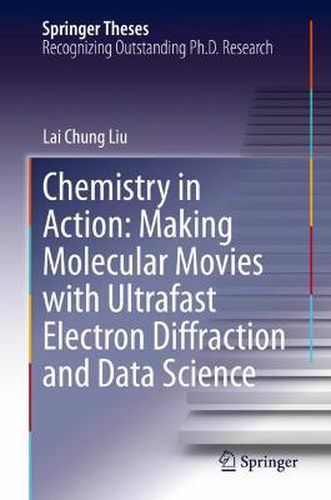Readings Newsletter
Become a Readings Member to make your shopping experience even easier.
Sign in or sign up for free!
You’re not far away from qualifying for FREE standard shipping within Australia
You’ve qualified for FREE standard shipping within Australia
The cart is loading…






This title is printed to order. This book may have been self-published. If so, we cannot guarantee the quality of the content. In the main most books will have gone through the editing process however some may not. We therefore suggest that you be aware of this before ordering this book. If in doubt check either the author or publisher’s details as we are unable to accept any returns unless they are faulty. Please contact us if you have any questions.
The thesis provides the necessary experimental and analytical tools to unambiguously observe the atomically resolved chemical reactions. A great challenge of modern science has been to directly observe atomic motions during structural transitions, and while this was first achieved through a major advance in electron source brightness, the information content was still limited and new methods for image reconstruction using femtosecond electron diffraction methods were needed. One particular challenge lay in reconciling the innumerable possible nuclear configurations with the observation of chemical reaction mechanisms that reproducibly give the same kind of chemistry for large classes of molecules. The author shows that there is a simple solution that occurs during barrier crossing in which the highly anharmonic potential at that point in nuclear rearrangements couples high- and low-frequency vibrational modes to give highly localized nuclear motions, reducing hundreds of potential degrees of freedom to just a few key modes. Specific examples are given in this thesis, including two photoinduced phase transitions in an organic system, a ring closure reaction, and two direct observations of nuclear reorganization driven by spin transitions. The emerging field of structural dynamics promises to change the way we think about the physics of chemistry and this thesis provides tools to make it happen.
$9.00 standard shipping within Australia
FREE standard shipping within Australia for orders over $100.00
Express & International shipping calculated at checkout
This title is printed to order. This book may have been self-published. If so, we cannot guarantee the quality of the content. In the main most books will have gone through the editing process however some may not. We therefore suggest that you be aware of this before ordering this book. If in doubt check either the author or publisher’s details as we are unable to accept any returns unless they are faulty. Please contact us if you have any questions.
The thesis provides the necessary experimental and analytical tools to unambiguously observe the atomically resolved chemical reactions. A great challenge of modern science has been to directly observe atomic motions during structural transitions, and while this was first achieved through a major advance in electron source brightness, the information content was still limited and new methods for image reconstruction using femtosecond electron diffraction methods were needed. One particular challenge lay in reconciling the innumerable possible nuclear configurations with the observation of chemical reaction mechanisms that reproducibly give the same kind of chemistry for large classes of molecules. The author shows that there is a simple solution that occurs during barrier crossing in which the highly anharmonic potential at that point in nuclear rearrangements couples high- and low-frequency vibrational modes to give highly localized nuclear motions, reducing hundreds of potential degrees of freedom to just a few key modes. Specific examples are given in this thesis, including two photoinduced phase transitions in an organic system, a ring closure reaction, and two direct observations of nuclear reorganization driven by spin transitions. The emerging field of structural dynamics promises to change the way we think about the physics of chemistry and this thesis provides tools to make it happen.